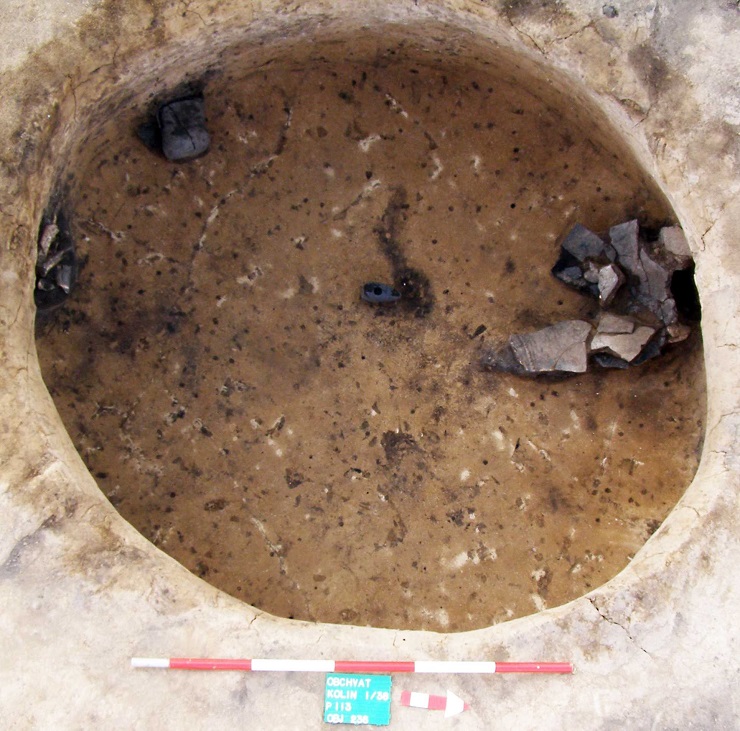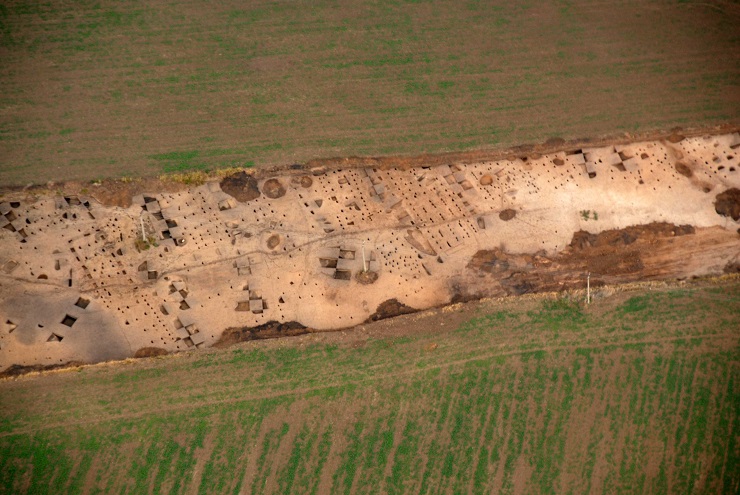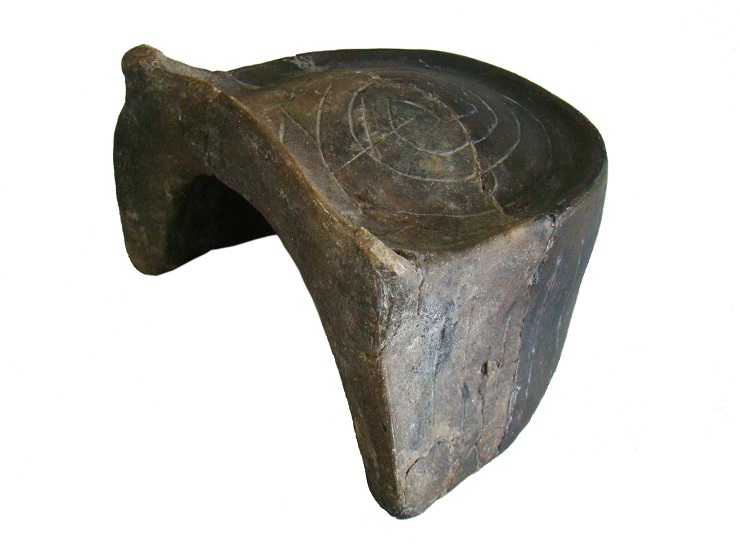|
|
| Intensively utilised settlement of the Linear Pottery culture in Kolín. Photo by Martin Gojda. |
The Period of the Pit Diggers – this is how the Neolithic Period, which left many traces in the ground in the form of recessed objects, which was unprecedented both in its previous and its subsequent development is sometimes referred to. Certainly also the anthropogenic activities of the pre-Neolithic period made some “marks in the ground”. The long time lag and the geological changes in the terrain, however, often make it impossible for these records to be found and correctly read and interpreted.
 |
| The storage pit of the Stroked Pottery culture (Kolín). |
Most of the pits in the Neolithic settlements that were preserved did not primarily originate as a simple hole in the ground but were the result of specific activities – postholes and long grooves represent a negative imprint of the house structure, construction pits provided the material for daubing house walls, clay pits (i.e. both large pits and their complexes) served as a source of clay for various purposes for a long time. The infill of these pits represents an invaluable source of information about the lives of the people living in the particular settlement, including not only the spatial segmentation of their activities but also the differences between the individual buildings or the campuses.
Some of the pits that are found on Neolithic settlements are referred to as storage objects and apparently they were dug specifically for the purpose of storing reserves. Storage in underground areas was used primarily in order to maintain the proper temperature and humidity for the different kinds of food, while the specific shape of the pits with their narrow easily-sealable necks enabled the farmers to preserve seeds for the next season and they are referred to as silos. In regard to the silos it was the long-term stability of their walls and their insulation that guaranteed the protection of stored reserves and suitable climatic conditions for the preservation of germination.
|
|
| The model of the furnace from Bylany. It may, however, be a representation of a different building that has not yet been discovered by field research. |
|
|
| The furnace together with the rest of the dome from Bylany. What exactly this heating device was used for is unclear. It was probably a multifunctional device, used both for cooking food and for other production processes. |
Want to learn more?
- Šumberová, R. 1996. Neolithic underground storage features. Památky Archeologické 87: 61–103.
 Archeologické 3D virtuální muzeum
Archeologické 3D virtuální muzeum

.png)


